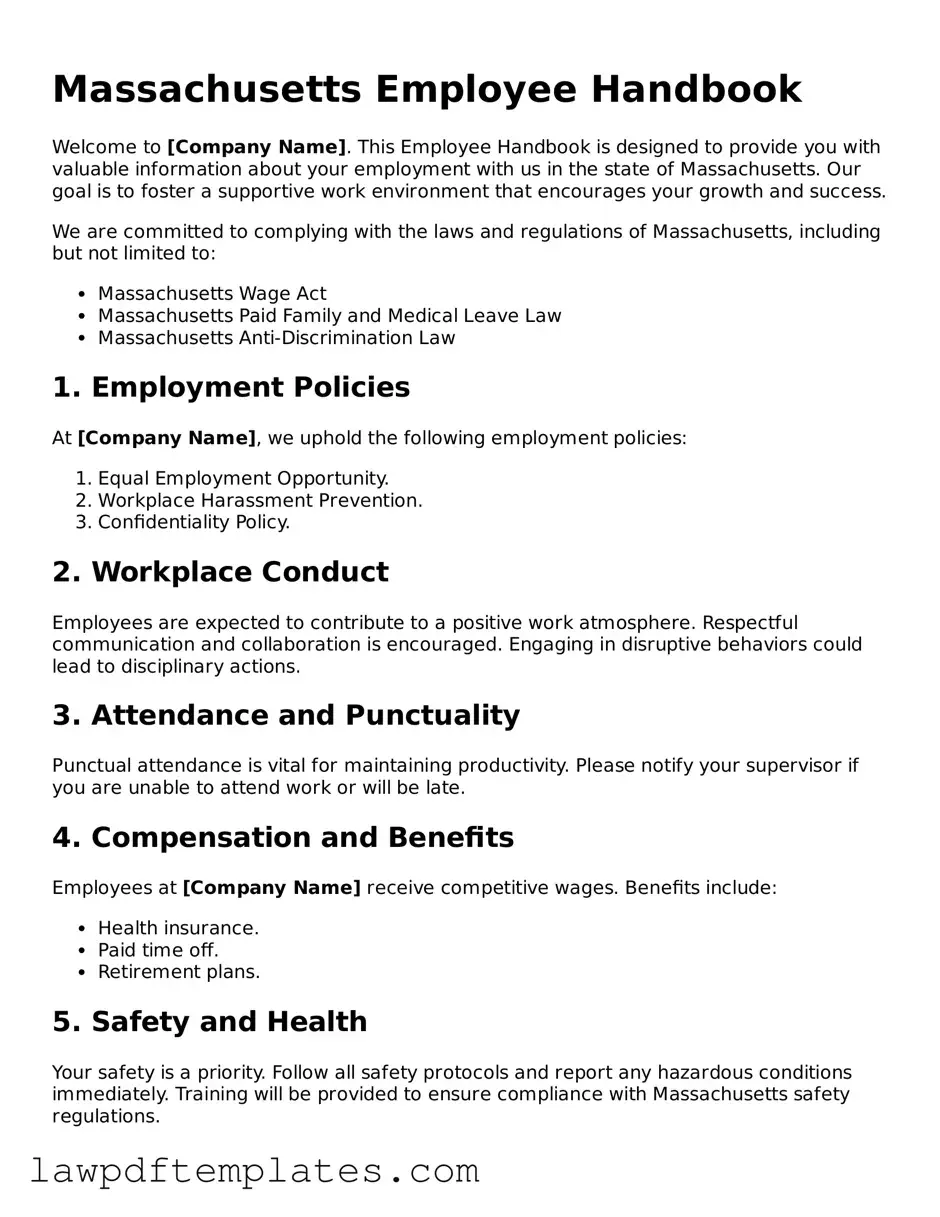Massachusetts Employee Handbook
Welcome to [Company Name]. This Employee Handbook is designed to provide you with valuable information about your employment with us in the state of Massachusetts. Our goal is to foster a supportive work environment that encourages your growth and success.
We are committed to complying with the laws and regulations of Massachusetts, including but not limited to:
- Massachusetts Wage Act
- Massachusetts Paid Family and Medical Leave Law
- Massachusetts Anti-Discrimination Law
1. Employment Policies
At [Company Name], we uphold the following employment policies:
- Equal Employment Opportunity.
- Workplace Harassment Prevention.
- Confidentiality Policy.
2. Workplace Conduct
Employees are expected to contribute to a positive work atmosphere. Respectful communication and collaboration is encouraged. Engaging in disruptive behaviors could lead to disciplinary actions.
3. Attendance and Punctuality
Punctual attendance is vital for maintaining productivity. Please notify your supervisor if you are unable to attend work or will be late.
4. Compensation and Benefits
Employees at [Company Name] receive competitive wages. Benefits include:
- Health insurance.
- Paid time off.
- Retirement plans.
5. Safety and Health
Your safety is a priority. Follow all safety protocols and report any hazardous conditions immediately. Training will be provided to ensure compliance with Massachusetts safety regulations.
6. Employee Grievances
If you have concerns or grievances, communicate them promptly. We strive to address all issues fairly and respectfully.
7. Acknowledgment of Receipt
By signing below, you acknowledge that you have received, read, and understood the policies outlined in this Employee Handbook.
Employee Name: [Employee Name]
Signature: _______________________ Date: _____________
Thank you for being a part of [Company Name]. We look forward to supporting you throughout your career with us.
